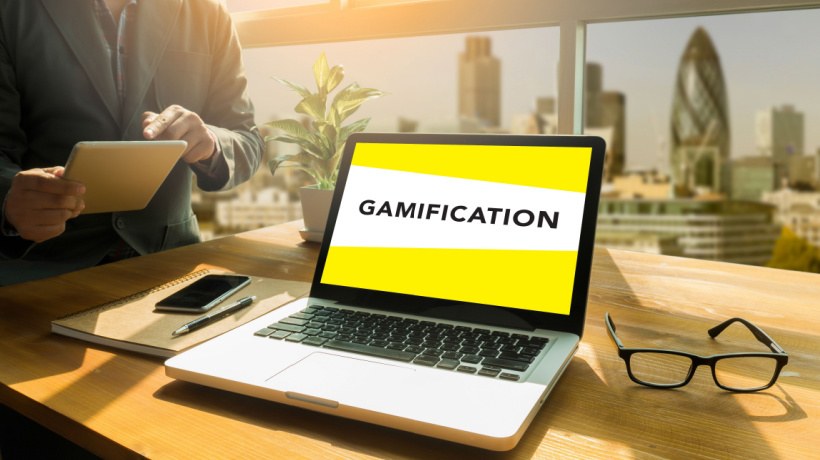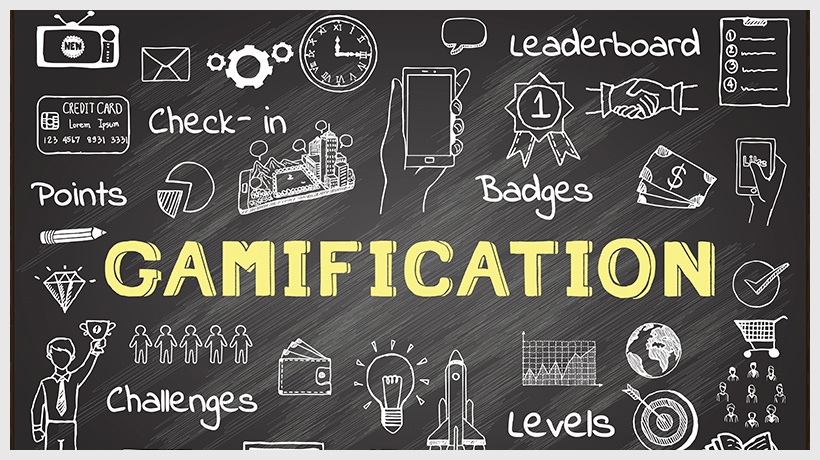How Can Gamification Be Used Effectively In Corporate Training?
Gamification in corporate training is the amalgamation of principles along with key gaming elements to deliver the requisite learning objectives, thus delivering a highly engaging approach to training.
Through gamification, L&D teams are able to expedite the learning process. Learners tend to achieve learning outcomes more effectively via an engaging journey rather than a traditional training approach. An efficient gamification strategy offers higher completion rates as well as improved recall and retention. It can also be used to successfully help learners enhance the application of learning on the job as well as help them upskill.
Need more? Take a look at the following stats:
- Employees are open and positive about gamification
- 97% of employees above the age of 45 agree that it would help improve work
- 87% agree that it makes them more productive
- 85% would spend more time on gamified software (Source: FinancesOnline)
How Effective Is Gamification In Enhancing The Impact Of Corporate Training?
Generally, in any training strategy, the following list is a must-have in order to achieve the expected training mandate. It should be:
- Motivating
- Engaging
- Relevant and relatable (preferably personalized)
- Challenging
- Rewarding
It must:
- Create sticky learning
- Facilitate the application of learning
- Provide room for practice and proficiency gain
- Provide reinforcement to ensure the “forgetting curve” does not step in
- Trigger behavioral change
By implementing gamification into your learning strategy, you will definitely see an improved impact on the learning experience—Here’s why:
- Gamification addresses and uses the precepts of repeated retrieval and spaced repetition to sow the seeds to noticeable behavioral change.
- Games can be "fun" for the learner, yet significantly improve the learning. Learners can have "fun" as they progress through the game, engage in friendly competition, and gain a sense of achievement, all this while experiencing "learning" when they’re absorbed in the gameplay.
- Playing games with high levels of engagement brings about an increase in knowledge retention.
Practically speaking, you can use gamification to enhance the impact of your corporate training strategy and evoke the best response in the following ways:
- Enable learners to have fun while learning
- Apply their learning on the job (By offering practice zones featuring real-life scenarios, learners can perform exercises and develop their skills in a safe environment.)
- Bring about a change in behavior through the long-term implementation of gamification techniques
The value of gamification for corporate training is reaffirmed by the following stats:
- Company gamification training features are said to increase by 60% the level of employee engagement and enhance productivity by up to 50%. (Source: FinancesOnline)
- 60% of employees who undertook gamified training increased their productivity. (Source: Forbes)
- 72% of employees claim gamification inspires them to work harder. (Source: Medium.org)
What Gamification Elements Are Typically Used To Enhance The Impact Of Corporate Training?
- A master narrative/story
This maps to the objective of the learning journey; the narrative crafts a real and relatable experience for learners. - Challenges
These map to the learning goals. - Levels
These form the learning path and map to various proficiency levels. - Instant feedback
This aids the learners’ progress and conveys a clear view of where they stand. - Scores
These help learners get a feeling of achievement, and they can view other’s scores, creating healthy competition. - Badges
They serve as elements to award noteworthy achievements. - Rewards
They serve as an element to engage and incentivize learners and keep them going on the learning path. - Collaboration tasks
These elements can be used when you have a team-based approach in gamification to facilitate collaboration within a team. - Leaderboards
These are the analytic elements that give learners a clear view of their progress as well as how they are performing compared to others.
NextGen Gamification Techniques
To take that learner engagement level a notch higher, you can also make use of NextGen gamification techniques. At EI Design, our NextGen gamification techniques build upon the success of current approaches. For instance, we have eLearning NextGen gamification solutions such as:
- Long-term gamification: involving the completion of larger milestones, real-time simulations, monthly evaluation of learner’s performance, and so on
- Tactile and multi-platform gamification: featuring Virtual Reality, mobile, and wearable technology
- Microlearning-based gamification: giving learners a “bite-sized” gamification experience
- Personalized gamification: featuring personalized learning and gaming paths for learners
- Social media-based gamification: helping learners collaboratively address challenges and solve problems
Now that you know what gamification entails and how effective its techniques are in enhancing the impact of corporate training, take a look at these 5 killer examples of gamification for the workplace from our rich repository.
5 Killer Examples Of Gamification: How We Enhanced The Impact Of Diverse Corporate Trainings
Over the last decade, our gamification strategies have evolved and matured. Our approaches now go beyond the badges and leaderboards and leverage other approaches like personalization, microlearning, social learning, mobile apps, and learning portals.
Let me share the highlights of our gamification practice and a few examples on each level. Interestingly, while this showcases how our practice has matured, it also shows how organizations can integrate gamification in the workplace to double the impact of corporate training.

Level 1: Partial Gamification
This is the entry-level usage of gamification and can be applied as a gamified quiz or assessment in a traditional eLearning course. It could also be used as a micro-challenge in a microlearning-based learning journey.
Example 1: Gamified Quiz
Here’s an example of a gamified assessment. In this game:
- The learner has to navigate through a series of roadblocks
- Answer questions to complete challenges and move ahead
- Gain bonuses, which gives the learner a sense of achievement

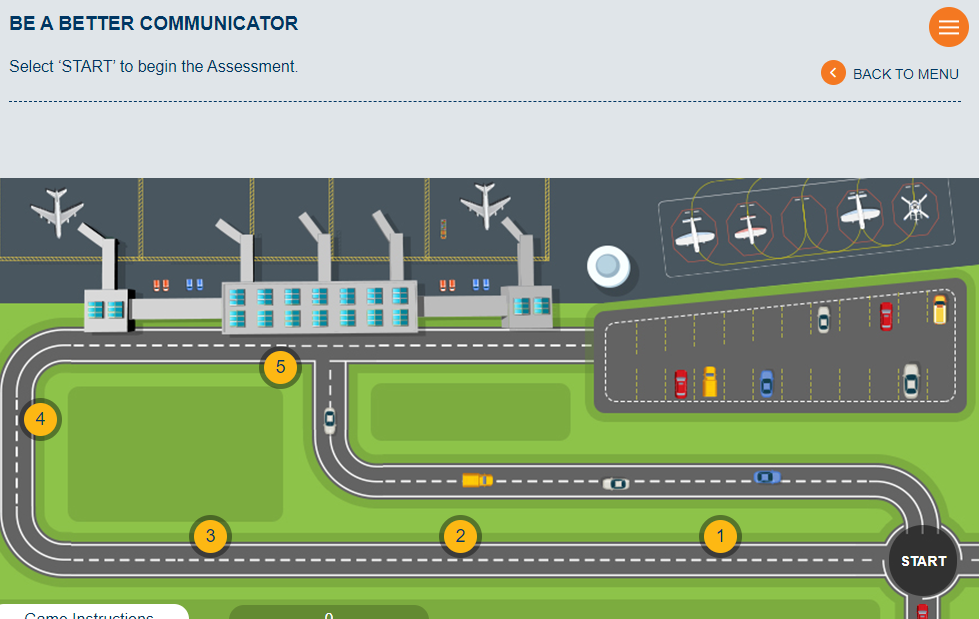
Level 2: Game-Based Learning
In this case, the entire learning path is converted into a game. It features scores, badges, and leaderboards.
Example 2: Compliance Course On Social Engineering Converted Into A Game
Here’s an example of a compliance program made highly engaging using a game-based approach:
- The approach uses a unique method for imparting learning through a mini-game and has a learning path format that is gamified.
- The gamified approach instills a sense of achievement and challenge for the learners while using varied learning formats to address different learner styles and proficiency levels.
- The overall game involves a gating strategy in the learning path, allowing the learners to apply what they have learned in each section.
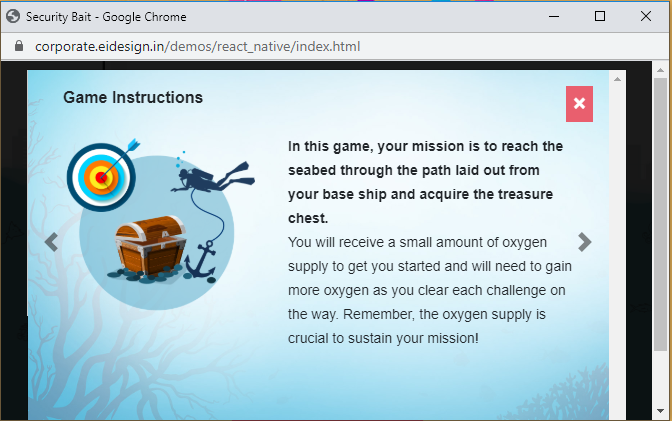
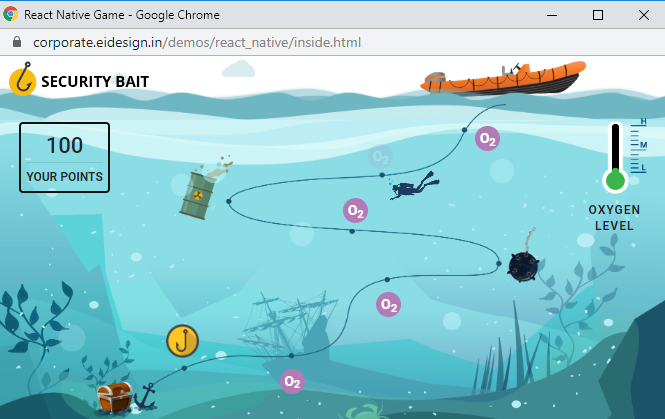
Level 3: Gamified Learning Path
This reflects a learning path that has challenges aggregating to achieving proficiency at different levels. It also features scores, badges, and leaderboards.
Example 3: Gamified Product Training
This gamified eLearning course showcases features and functions of various insurance products for learners belonging to a unique category (children from primary to junior high).
- Each topic in the course is a level, which the learners have to progress through, completing challenges and earning experience points, badges, and trophies along the way.
- It also features dashboards and leaderboards to impart a sense of social recognition in learners.


Level 4: Gamified Learning Portal
This depicts our portal-based offering featuring:
- Personalization in the form of profile creation and avatar selection
- Curation to create customized learning paths
- Social learning for collaboration
- Gamification in the form of points, badges, leaderboards, and scoreboards, and analytics on progression, and how learners can improve
Example 4: Gamified Portals
This is an "Induction and Onboarding" portal at EI Design that makes use of NextGen gamification techniques.
- It integrates concepts like learning paths with microlearning, social learning, and personalization while retaining the essential aspects (scores, badges, and leaderboards) of the previous two approaches.
- The learning journey is broken down into microlearning nuggets (e.g., videos, infographics, interactive nuggets, activities, and games).
- New-age technology, like Virtual Reality, using 360-degree images with learning aspects creates an immersive and engaging learning experience.
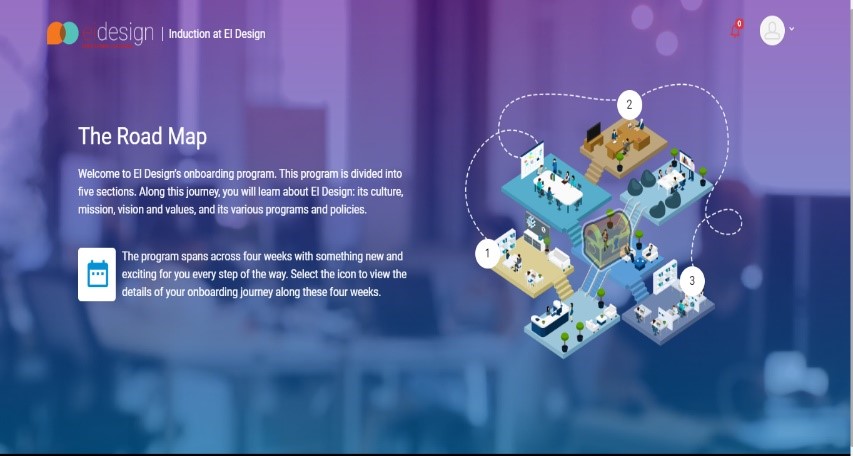
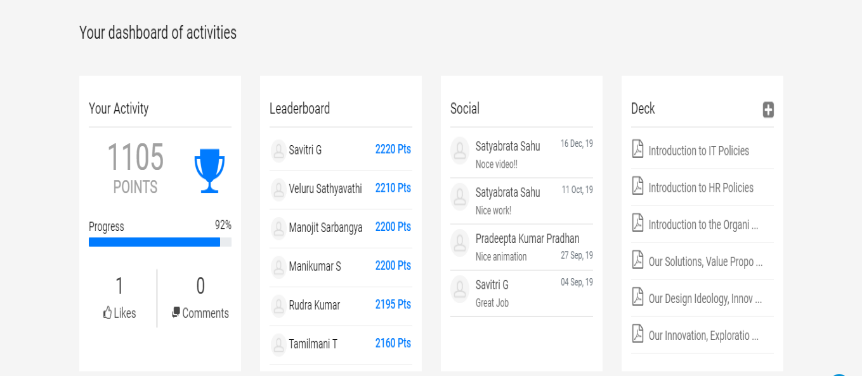
Example 5: A Complete Gamified Learning Experience
This solution uses a rich blend of 3D virtual environments, Virtual Reality videos, gamification, social learning elements, personalization, microlearning, etc.
In this game:
- Learners take on the role of an owner of a turf club
- Their mission is to build turf club assets while completing activities
- They must spend and earn money, gain badges, expertise, etc.

Conclusion
I hope these 5 killer examples of gamification provide inspiration on how you can use various levels of gamification to significantly enhance the impact of your corporate training. Meanwhile, if you have any specific queries, do contact me or leave a comment below.
Read More:
- eBook Release: How To Enhance The Impact Of Your Corporate Training With Next Gen Gamification Solutions
- 6 Killer Examples of Gamification in eLearning (Updated in 2020)
- Gamification Trends in 2020
- 7 Gamification Techniques For Corporate Training That Work
- How Can You Combine Mobile Learning And Gamification To Create High Impact Training?



